Rifle barrels have been made for centuries using relatively simple materials and tools–steel, forges, hammers, cutting tools, etc. Today, space-age technology is being applied to rifle barrels with great results. A company called Proof Research in northwest Montana had been making carbon fiber products for high-temperature applications for many years. The company is so adept at this they make components for modern military aircraft such as the F-35 Joint Strike Fighter and the B2 Stealth Bomber. They also make match grade stainless steel barrels for semi-automatic and bolt action rifles and highly accurate complete rifles. Finally, Proof Research makes carbon fiber wrapped barrels. These barrels–carbon fiber works of art, really–are the focus of this article.
Proof Research is a company formed from an aggregation of businesses oriented around a unifying principle: make great rifles that are lightweight and highly accurate. Initially Proof was a combination of a high-end rifle company (Jense Precision) and a barrel making company with a patented carbon fiber wrapping process (Advanced Barrel Systems). Later they added a quality composite rifle stock maker (Lone Wolf Rifle Stocks), a match grade rifle barrel company (Lawrence Barrels), and the leading manufacturer of advanced composite materials (P2SI). The combined company, Proof Research, is AS9100 certified as of 2016. This means they have been certified to adhere to the high manufacturing standards of the aerospace industry.
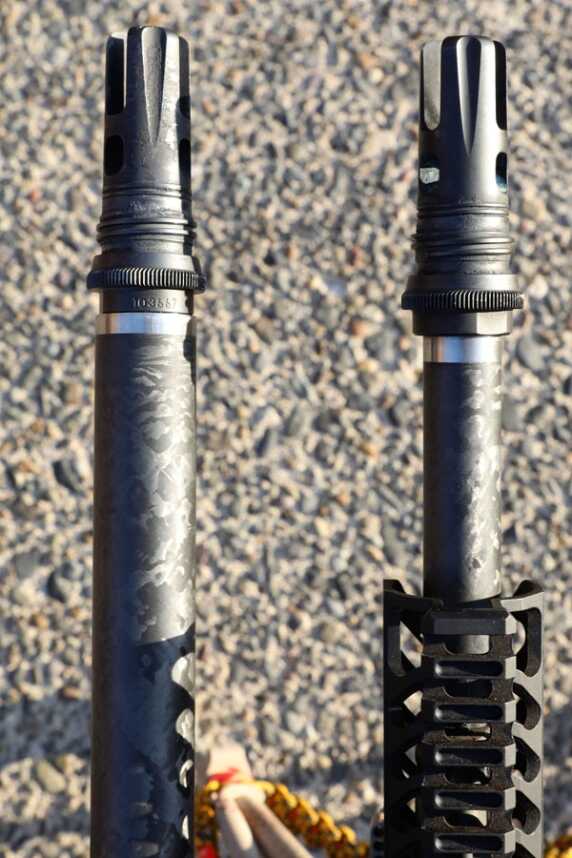
Lightweight, accurate, and fast cooling make Proof Research carbon fiber barrels suitable for shooting competitions, warfighting, and hunting applications.
Rifle barrels that utilize carbon fiber are not new, but there is something different about Proof Research carbon wrapped barrels–several things actually. First, there is the barrel insert itself. Using the expertise from building match-grade steel barrels at Lawrence, the 416R stainless barrel is made full-size to exacting tolerances. It is then turned down except at the muzzle, gas block journal, and shank to reduce the profile. After that, the barrel is wrapped with carbon fiber that has been impregnated with a proprietary resin. All Proof barrels come with a ½ MOA guarantee that is verified by their in-house Oehler ballistic chronograph at their indoor range. “We treat all of our barrels with accuracy goals the same as those of a bench rest rifle whether they are in ARs, bolt guns, or whatever,” said Proof representative Chris Polley in a recent interview. “Our barrels are hand lapped and will shoot less than ½ a minute,” Polley continued.
These barrels are tough. Carbon fiber is seven times stronger than steel and not susceptible to damage due to weather or scratching. To demonstrate this point Proof Research has a short video out on YouTube in which they smash a cinder block with one of their barrels without causing any visible damage–jump to the 3:30 mark to see the action. Having handled Proof Research carbon fiber wrapped barrels myself, this result is not surprising. They are very tough and extremely difficult to ding or mar.

Proof Research carbon fiber wrapped barrels are works of art that deliver superior downrange performance.
Another differentiating aspect of Proof’s barrels is the fact that the carbon fiber is not simply a sheet of fiber wrapped around the barrel. Proof uses what they call helical wrapping, which means they wrap the barrel insert with a single strand of carbon fiber in a helical pattern up and down the barrel while applying their proprietary resins. This wrapping method “favors longitudinal thermal diffusivity of the carbon fibers,” according to the company. What this means is the wrapped barrels do not retain heat very well. Why does this matter? Because heat is the enemy of accuracy, and long shot strings used by warfighters and competitive shooters can cause a lot of heat. This design feature helps both of these user groups. In fact, in their testing using a $180,000 FLIR camera over several iterations, Proof barrels were found to cool 1.6 times faster than steel barrels. Some accomplished 3-gun shooters confirm this feature.
Another advantage of Proof’s carbon wrapped barrels is their weight–they are 50% lighter than steel barrels of a comparable profile. Again, 3-gun competitors have taken notice.
The 50% weight reduction ha also been noticed by the U.S. military. Per Chris Polley, “Proof makes the only carbon fiber rifle currently in use by U.S. military. I can’t tell you who it is, however.” The military probing in the area of carbon fiber wrapped rifles makes sense given the accuracy, heat dissipation, and weight reduction. The latter means the warfighter either has a lightened load or can carry more ammunition. Either way, he wins. The military’s interest is not limited to rifle barrels either. “There are no scaling limitations for carbon fiber,” said Polley. “Carbon fiber can be used on barrels for tanks or other larger-than-shoulder-fired weapons. We just won a $12,000,000 contract with DOTC for military tubes in the 25mm, 30mm, and 105mm class” Polley stated.
Recently Proof released their CAMGAS system, which stands for Caliber Matched Gas system. This is a solution to the problem of having too much gas pressure in AR-style rifles in larger calibers such as the 6.5 Creedmoor. This is accomplished by tuning port sizes and location rather than utilizing an adjustable gas block or modified buffers and springs. Today Proof offers CAMGAS systems with carbon wrapped barrels in .22 Nosler, .224 Valkyrie, .260, and 6CM, and 6.5 Creedmoor. Plans exist to bring .243 to market in the near future.
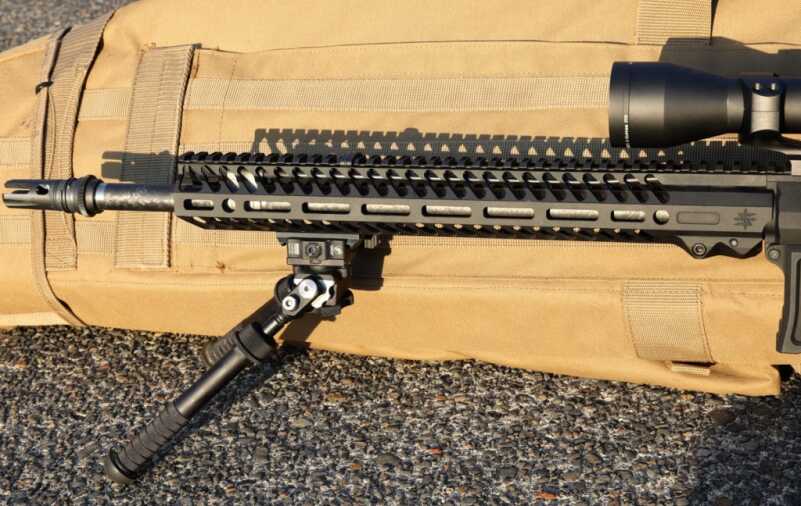
The Proof Research CAMGAS line of barrels is optimized for proper gas flow in semi-automatic rifles.
Over the past year, this writer has installed and used Proof Research carbon fiber wrapped barrels on two platforms: a Seekins Precision 3-gun rifle in .223 Wylde and a Ruger Enhanced Precision Rifle in 6.5 Creedmoor. Both platforms shoot at the advertised ½ MOA, and long shot strings seem to make no difference to performance. The weight savings is noticeable and greatly appreciated for the competition Seekins rifle and the relatively heavy Ruger bolt action. The .223 Wylde barrel is offered in lengths from 11.5 inches to 20 inches. The version used in my rifle is 18 inches with a rifle length gas system, 1:7 twist, and ½-28 threads. The 6.5 Creedmoor barrel is a 1:8 twist 24-inch barrel that is threaded 5/8-24. Each of these barrels retails for $920. For more information check out www.proofresearch.com.
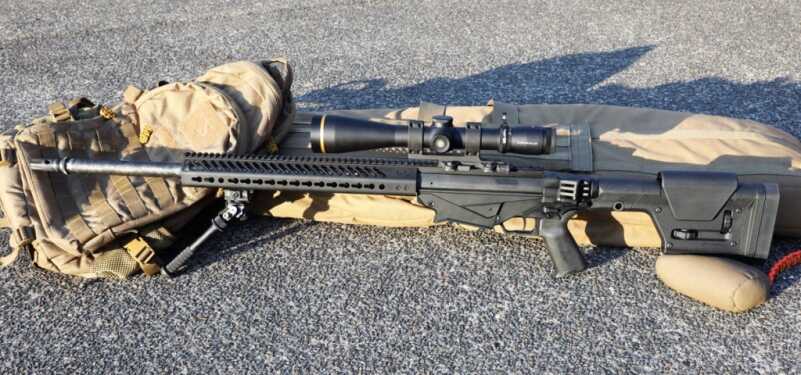
Proof Research 6.5 Creedmoor barrel for the Ruger Enhanced Precision Rifle. This barrel arrives ready for installation, includes a threaded muzzle, and shaves pounds off the rifle.
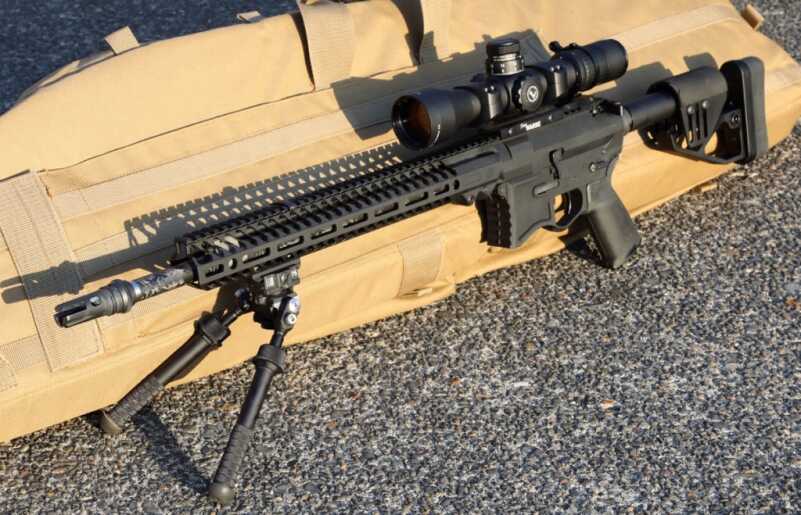
The author’s 3-gun competition Seekins Precision rifle with Proof Research carbon fiber wrapped barrel.
Visit Proof Research to learn more about their products by clicking HERE.

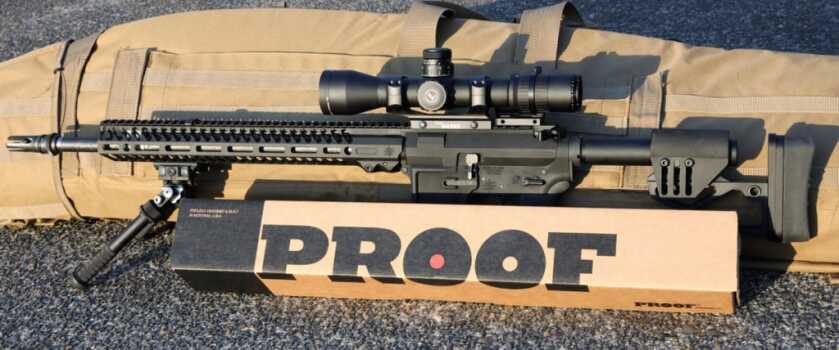


I am curious of the durability of the CF. I knew a few people with CF framed bikes that ended up getting damaged and were unrepairable because no mechanic would touch them. I would like to see how these would react should the CF become damaged.
Take a look at the video referenced in the article and see what you think about even being able to damage one of these barrels. I’m not sure how you would do so.
I have a 24 in sendero and it’s super nice. It’s not 920.00 either I paid 730.00. they at great barrels it just sucks that they cost double compared to they’re steel counterpart. Stiffer and lighter. My rifle still weighs a ton though. The sendero light would make a solid hunting barrel and the regular sendero is bigger than a m24 barrel. Good shit if you can scrape up the money. I will not use other Barrels after these.
I really like the idea of modern tech improving accuracy, weight and function. With a $920 barrel, one would expect sub moa accuracy for precision long distance. I just wonder how many hunters want to ethically shoot much past 400 yards.
I know I can buy a complete rifle that shoots sub moa for around the price of one barrel. That said, I would like a barrel in 6.5 creed for my Savage 110, just because